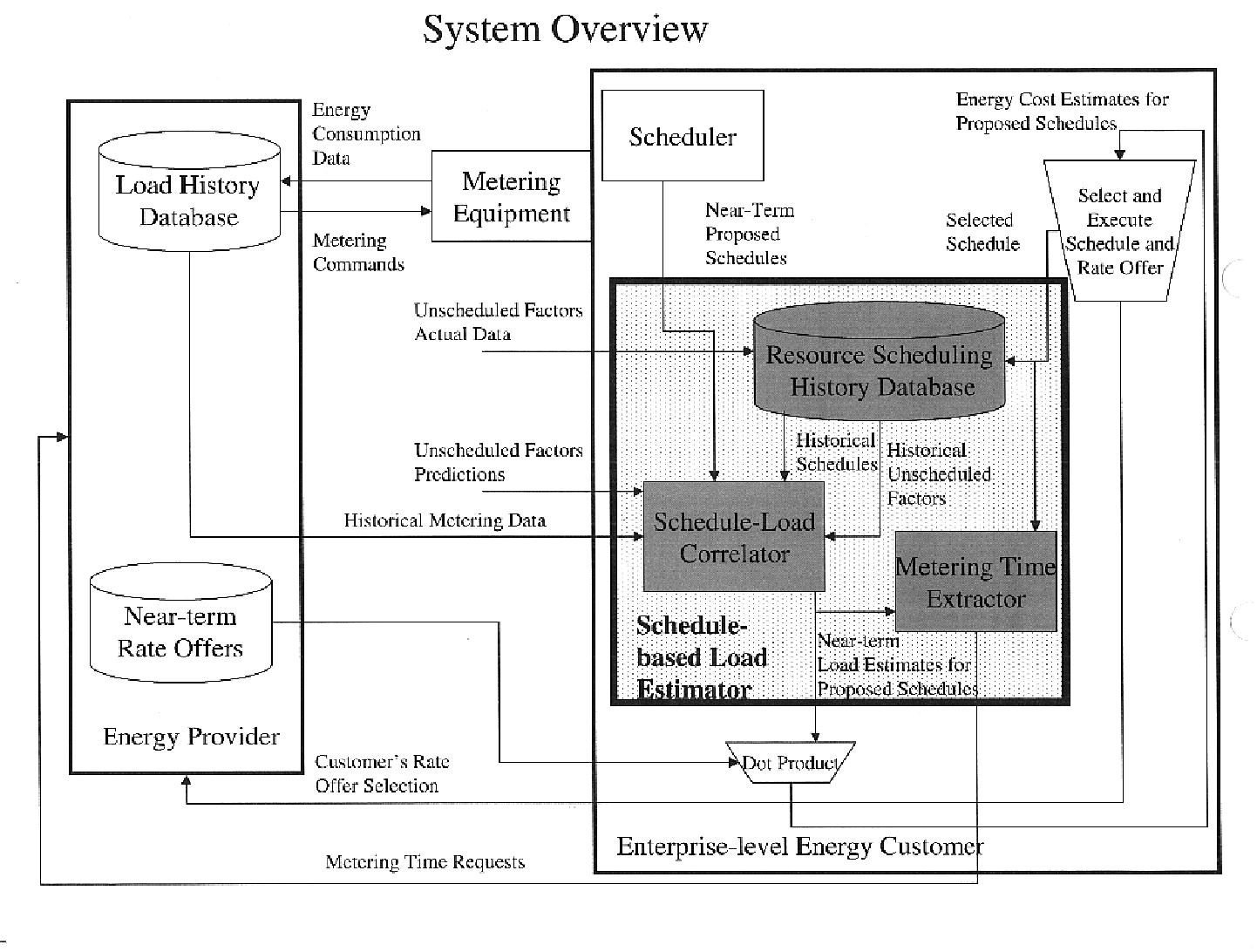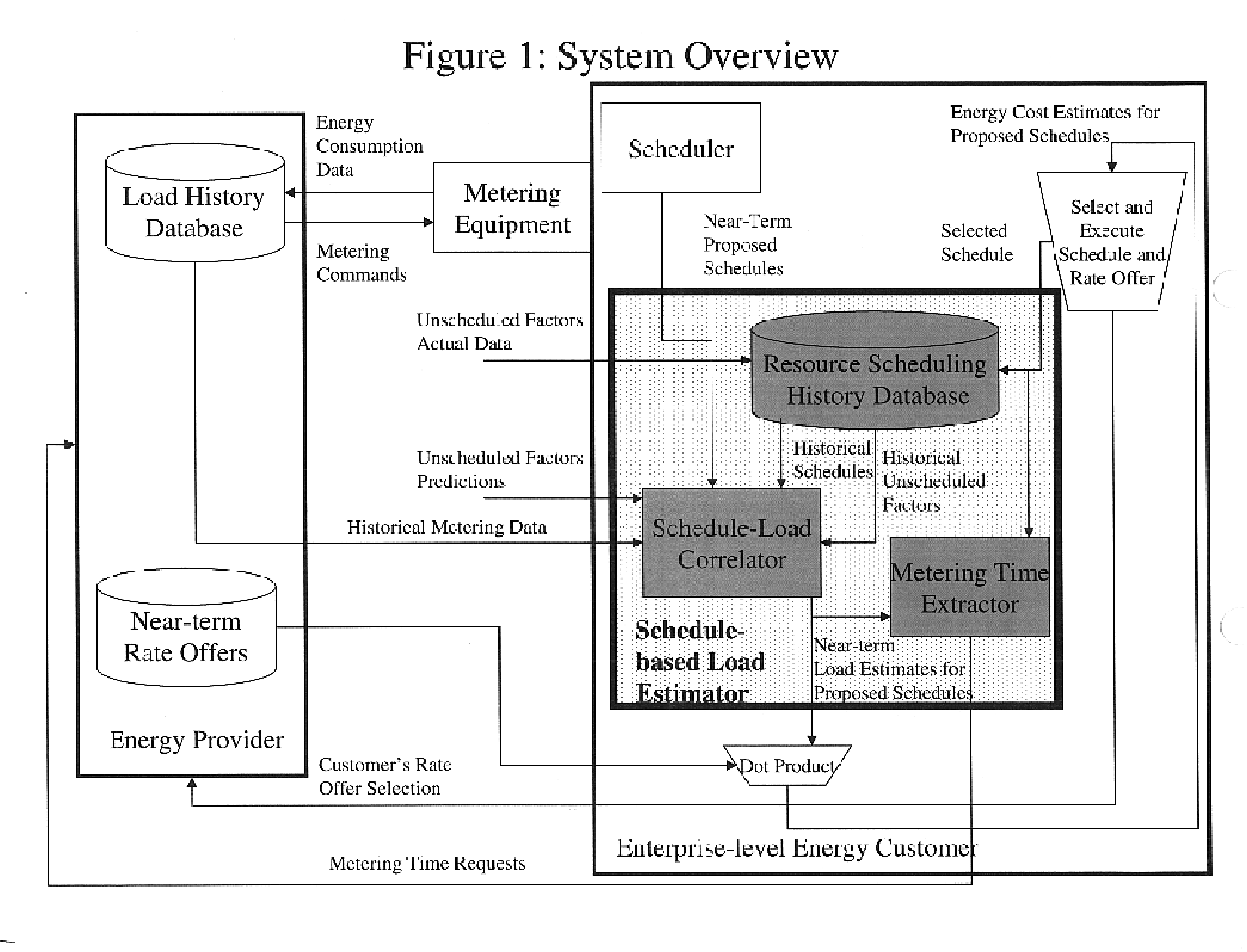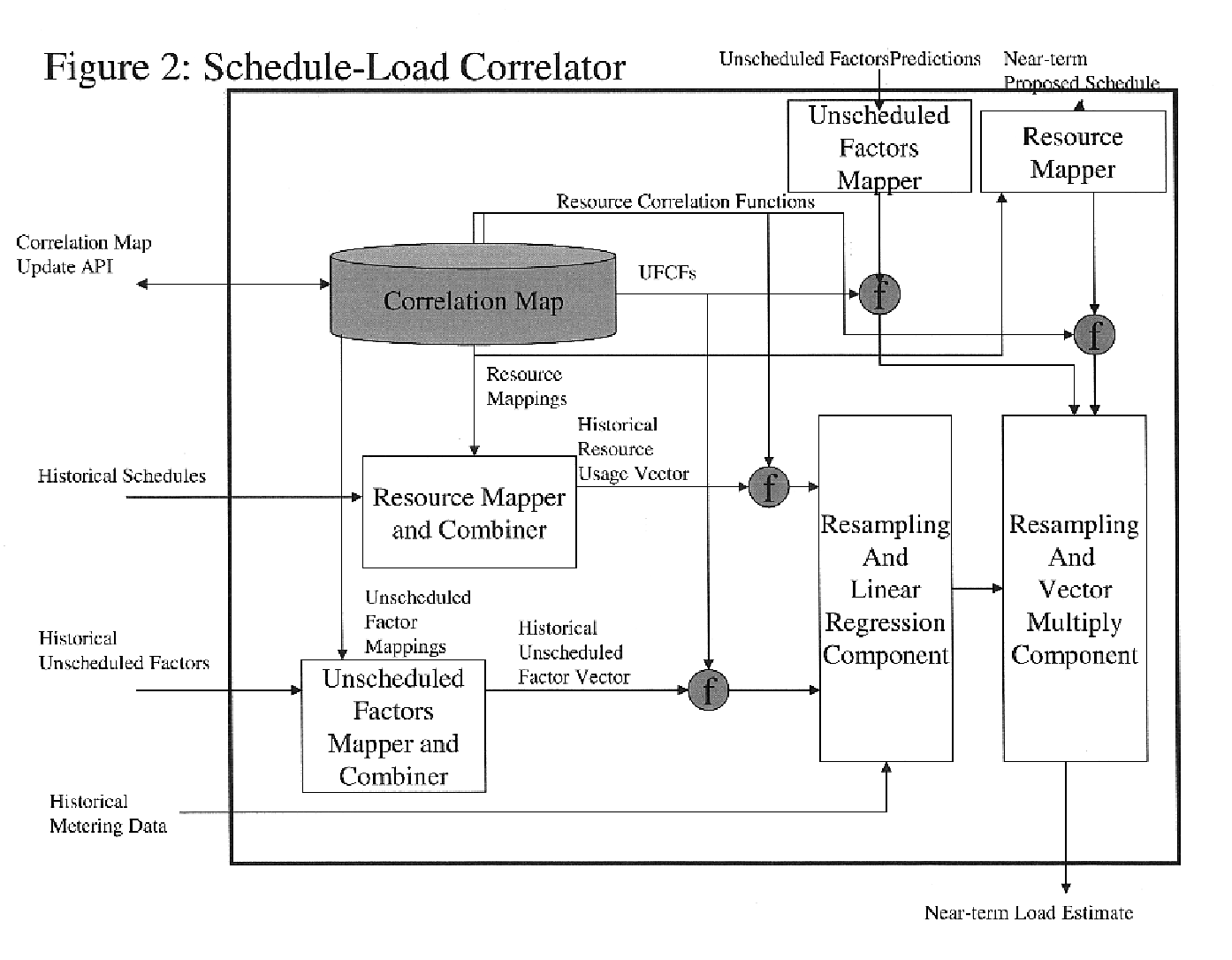Schedule-based load estimator and method for electric power and other utilities and resources
a schedule-based and load-estimator technology, applied in the field of system and method for load estimation, can solve the problems of high implementation cost, prohibitively expensive process for all but the largest sites, and high operating cost, and achieve the effect of improving the accuracy of further schedule-based load estimation
- Summary
- Abstract
- Description
- Claims
- Application Information
AI Technical Summary
Benefits of technology
Problems solved by technology
Method used
Image
Examples
example
In the following exemplary and illustrative embodiment of the invention, the enterprise-level energy customer produces schedules that assign 100 energy-consuming resources, R_1 through R_100, to production tasks. Each production task has at least the following information:A start timeAn end timeA list of the resources it uses
R_1 through R_100 are all machines on the production line. For the most part, the individual power consumption of R_1 through R_100 is constant whenever the resource is used. An exception is that R_2 preheats the parts that are then fed into R_3, and thus saves R_3 the energy needed to heat them. R_3's power consumption is thus related to whether R_2 is used or not.
The start and end times in the historic schedule form a set of historic schedule intervals, I_1 through I_k.
We will estimate the energy consumption of only one proposed schedule. The proposed schedule assigns resources R_1 through R_100 to tasks, as the historic schedule did. The proposed schedule is ...
example historic
Unscheduled Factor Coefficient Matrix
(Rows−Unscheduled Factors, Columns=Historic Unscheduled Factors Intervals)
The historic resource usage data structure can be thought of as representing either a value matrix or a coefficient matrix. The two are equivalent.
The resource correlation function transforms the historical resource usage data structure into a matrix whose columns represent time and whose rows are linearly related to energy consumption. The result is a linearized historic resource matrix.
For the most part, the resource correlation function is identity. However, a synthetic resource, R_102, is added for the special case of R_2 and R_3. R_102 equals R_2 times R_3.
The unscheduled factors correlation function (UFCF) works in a similar way on the unscheduled factors value matrix. However, the UFCF creates synthetic unscheduled factors U_5, U_6, etc. that correspond to the s1, c1, s2, c2, etc. terms of the Fourier series that is used to represent the linearized time-of-day depend...
PUM
 Login to View More
Login to View More Abstract
Description
Claims
Application Information
 Login to View More
Login to View More - R&D
- Intellectual Property
- Life Sciences
- Materials
- Tech Scout
- Unparalleled Data Quality
- Higher Quality Content
- 60% Fewer Hallucinations
Browse by: Latest US Patents, China's latest patents, Technical Efficacy Thesaurus, Application Domain, Technology Topic, Popular Technical Reports.
© 2025 PatSnap. All rights reserved.Legal|Privacy policy|Modern Slavery Act Transparency Statement|Sitemap|About US| Contact US: help@patsnap.com



